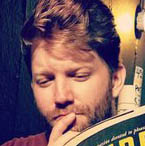Off the Shelf: ‘Art of Darkness’
Books about the art and craft of cinema that you should be reading
Art of Darkness: The Cinema of Dario Argento
Chris Gallant (ed.), Art of Darkness: The Cinema of Dario Argento (Guildford: FAB Press, 2001), 318pp. Hbk.
On the occasion of Luca Guadagnino’s remake of Italian director Dario Argento’s 1977 genre-defining Giallo Suspiria, there’s been a lot of discussion of not only that film but all of Argento’s works. Considered by many to be the first, last, and only tome on the matter is Chris Gallant’s collection aptly titled Art of Darkness: The Cinema of Dario Argento from FAB Press in 2001.
Clocking in at over 300 pages and covering not only Argento’s film and TV work but also his many producing and writing credits, the book is split into three main segments: the first, ‘primo tempo’, is a series of five essays by the book’s editor, Chris Gallant. In ‘secondo tempo’ are individual reviews penned by the likes of Kim Newman, Gary Needham, Stephen Thrower, and Mike Lebbing. Wrapping everything up in ‘il piu’ is Julian Granger’s filmography section with a deep dive into almost everything Argento laid his hands on.
It’s worth mentioning that this book is not for the casual film fan. These essays and reviews go deep on themes — references to the art world, masculinity, paranoia — relating to not only Argento’s work but Italian genre film and its history. Gallant’s essays exemplify this. In his excellent 5th entry titled ‘Quoting The Raven: Philosophies of composition and the female corpse as objet d’art: the influence of Edgar Allen Poe’, Argento is quoted as saying, “When I began to make films, I recognized that my themes had some affinity with the events told by Poe in his stories; his hallucinatory worlds, his bloody visions. I asked myself: Have I opened my Pandora’s Box? Would I be consumed by my mad and perverse characters? Can a mind exist in peace that takes its inspiration from Hell?” In Tenebre (1982) — one of Argento’s most self-reflexive works — the killer compares his murders to “writing a book”, predating Wes Craven’s Scream by almost 25 years.
The book was released in 2001 and, since Argento is still making films, it’s due for an update. Many of the director’s 21st century output is worth discussing, like 2007’s Mother of Tears (the final entry in the loose “Three Mothers” trilogy also containing Suspiria and 1980’s Inferno) as well as Jenifer, his episode for 2005’s Masters of Horror TV series.
Curiously absent is any analysis or criticism from women. For so many essays and reviews focused on the idea of masculinity and violence against women, there are zero takes from those who are so often the focus of Argento’s work. Art of Darkness is long out of print and the hardcover goes for upwards of $250 online (the paperback edition starts at generally more affordable prices), but it’s worth tracking down for anyone interested in writing about or studying the huge scope of Argento’s work.
Hey, while you're here ...
We wanted you to know that The End Run is published by Endcrawl.com.
Endcrawl is that thing everybody uses to make their end credits. Productions like Moonlight, Hereditary, Tiger King, Hamilton—and 1,000s of others.
If you're a filmmaker with a funded project, you can request a demo project right here.
A Most Violent Turn
Books about the art and craft of cinema that you should be reading.

